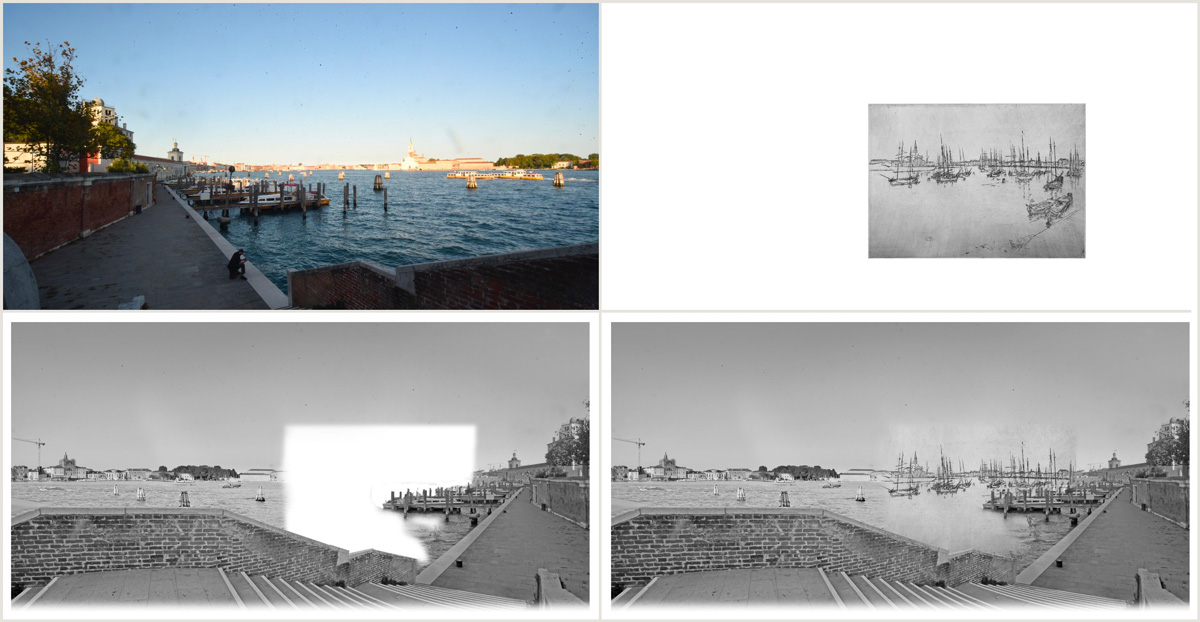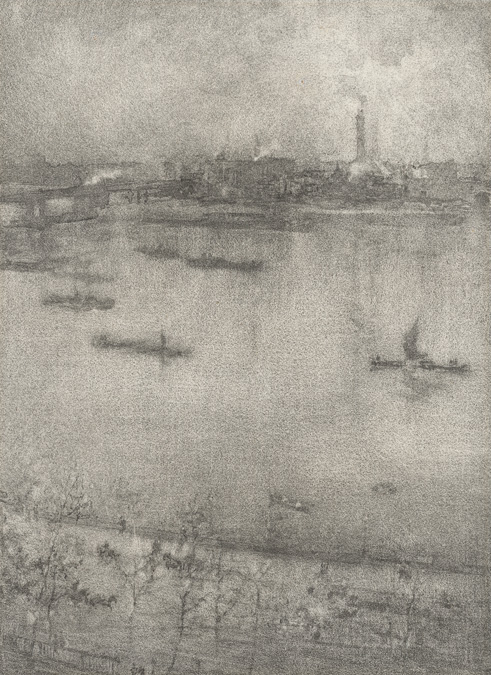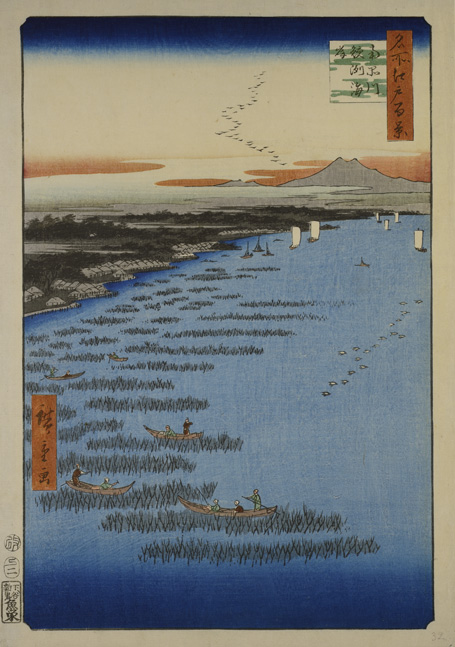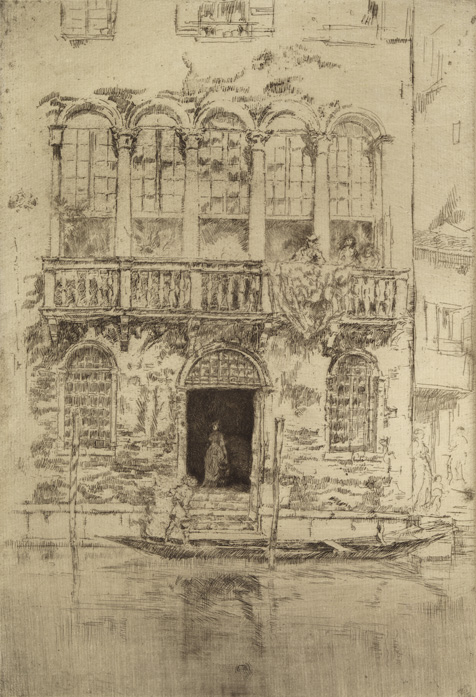From London to Venice
James Whistler & Hiroyuki Masuyama
April 26 to July 5, 2026
Kunstforum Ingelheim – Old Town Hall
After more than 25 years, an exhibition in Germany is once again dedicated to the American artist James Whistler (1834–1903).
He is considered one of the most innovative, influential, and significant graphic artists of the 19th century.
Our exhibition focuses on Whistler’s etchings and lithographs, which depict views of London and Venice as well as portraits of people from his immediate circle.
New photographic works by Hiroyuki Masuyama, created by the Japanese artist especially for this exhibition and displayed alongside Whistler’s originals, provide a link to the present day.
London
In 1859, Whistler settled in London and created graphic works there, which particularly depict life and work on the Thames. However, the adopted Londoner also traveled to many countries, stayed longer in various European cities, and was therefore a well-connected artist.
Japanese Inspiration
Like most Impressionist artists, Whistler also engaged with Japanese woodcuts: their composition and style demonstrably influenced many of his works, which is why selected examples by renowned Japanese woodcut artists accompany his graphic works.
Venice
From 1879, he lived in Venice for several months, where views of the lagoon city or depictions of daily life emerged. For this, he often chose a view from the waterside.
London
In 1859, Whistler settled in London and created graphic works there, which particularly depict life and work on the Thames. However, the adopted Londoner also traveled to many countries, stayed longer in various European cities, and was therefore a well-connected artist.
Japanese Inspiration
Like most Impressionist artists, Whistler also engaged with Japanese woodcuts: their composition and style demonstrably influenced many of his works, which is why selected examples by renowned Japanese woodcut artists accompany his graphic works.
Venice
From 1879, he lived in Venice for several months, where views of the lagoon city or depictions of daily life emerged. For this, he often chose a view from the waterside.
Context
To contextualize his oeuvre in terms of art history, the works are also accompanied by selected prints by his contemporaries and companions:
Works by Seymour Haden, Joseph Pennell, Frank Short, as well as Édouard Manet, Camille Pissarro, or Marcellin Desboutin reveal Whistler as a significant source of inspiration, but can also demonstrate mutual inspiration.
Hiroyuki Masuyama
For our exhibition in late summer 2025, Hiroyuki Masuyama (*1968) visited the exact locations in London and Venice from which Whistler created the preliminary drawings for his graphic works.
In the new works, Whistler’s city and harbor scenes were superimposed with photographs of the current situation. To achieve this, Masuyama first converted his color photographs to black and white, then mirrored them, and finally embedded Whistler’s graphic works into the photos at their respective correct positions.
Past and present are skillfully merged in this way. Depending on the motif, the transition can be sensually harmonious or even contrasting.
Masuyama’s overarching theme of “Time, Space, Change” can be experienced in an impressive way not only in his new works but also through a selection of older, large-format works.

Making of: after Whistler San Giorgio (1879/80), 2025, digital photography on paper, 43 x 83 cm © Hiroyuki Masuyama

Making of: after Whistler San Giorgio (1879/80), 2025, digital photography on paper, 43 x 83 cm © Hiroyuki Masuyama
Events
A varied accompanying program, including expert-led tours, lectures, workshops, etc., will once again complement this exhibition.






